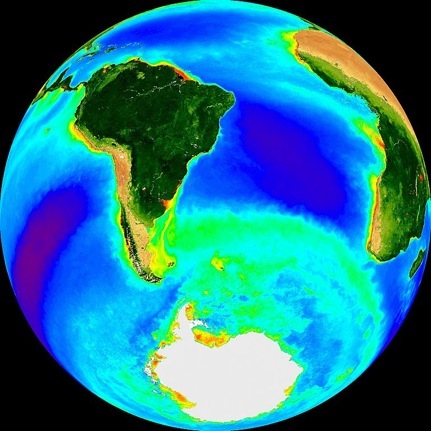Role of the Malvinas Current on the Patagonia Continental Shelf dynamics and biophysical environment
Buenos Aires, 24-26 June 2013
Role of the Malvinas Current on the Patagonia Continental Shelf dynamics and biophysical environment
Buenos Aires, 24-26 June 2013

The most productive upwelling regimes and energetic boundary currents are located on continental slopes where substantial marine biodiversity concentrates. These areas are home to almost 80% of Earth’s flora and fauna, and yield approximately 90% of the world’s harvest of fish and shellfish. In some localized areas, the continental shelf is also a source of oil, natural gas, and mineral deposits–all packed into a surface area that is only about 8% of the global seafloor. The Southwestern Atlantic (SWA) continental shelf is one of the richest areas in the world ocean. Along the shelf-break color images show chlorophyll-a concentrations as large as those present on eastern boundary upwelling systems. This productivity spreads throughout the food-web, reaching top predators and making fisheries more profitable.
Scientific questions that motivate the workshop:
Which are the main biogeochemical variables and process that control the phtoplankton biomass in the continental shelf and adjacent shelf-slope in the SWA?
How is the C balance in the Malvinas Current (MC) and in the Patagonia Continental Shelf (PCS)?
Which is the effect of ocean nutrients exportation in frontal systems
as the Shelf-break Front in determining the diversity of species in the Patagonia Sea?
Which are the main processes that control the seasonal spatio-temporal variability of surface chl-a observed with satellites?
Is the nutrient distribution in the MC and PCS related to the flow structure in both regions?
Is the Malvinas Current the main driver of shelf transport and can we evaluate this relationship with a combination of in-situ and altimetry data?
Which are the processes that control upwelling in the Patagonian shelf-break?
Can we monitor seasonal and longer periods time variability of currents in the PCS and MC through a combination of satellite and in-situ measurements?
Where:
Auditorio Fundación Pablo Cassará. Avenida de Mayo 1190, Ciudad Autónoma de Buenos Aires, map
When: 24-26 June, 2013
Sponsors
Local organaizing committee
Martin Saraceno, email
Virgina Palastanga, email
Alejandro Bianchi, email
Hosting institution:
UMI-IFAECI International Mixed Unit Instituto Franco-Argentino sobre Estudios de Clima y sus Impactos has been created in 2010 jointly sponsored by CNRS, National Council of Scientific and Technology Research of Argentina (CONICET) and University of Buenos Aires (UBA).
Two climate-related and fundamentally economic marine environments: Patagonia Continental Shelf and Malvinas Current
